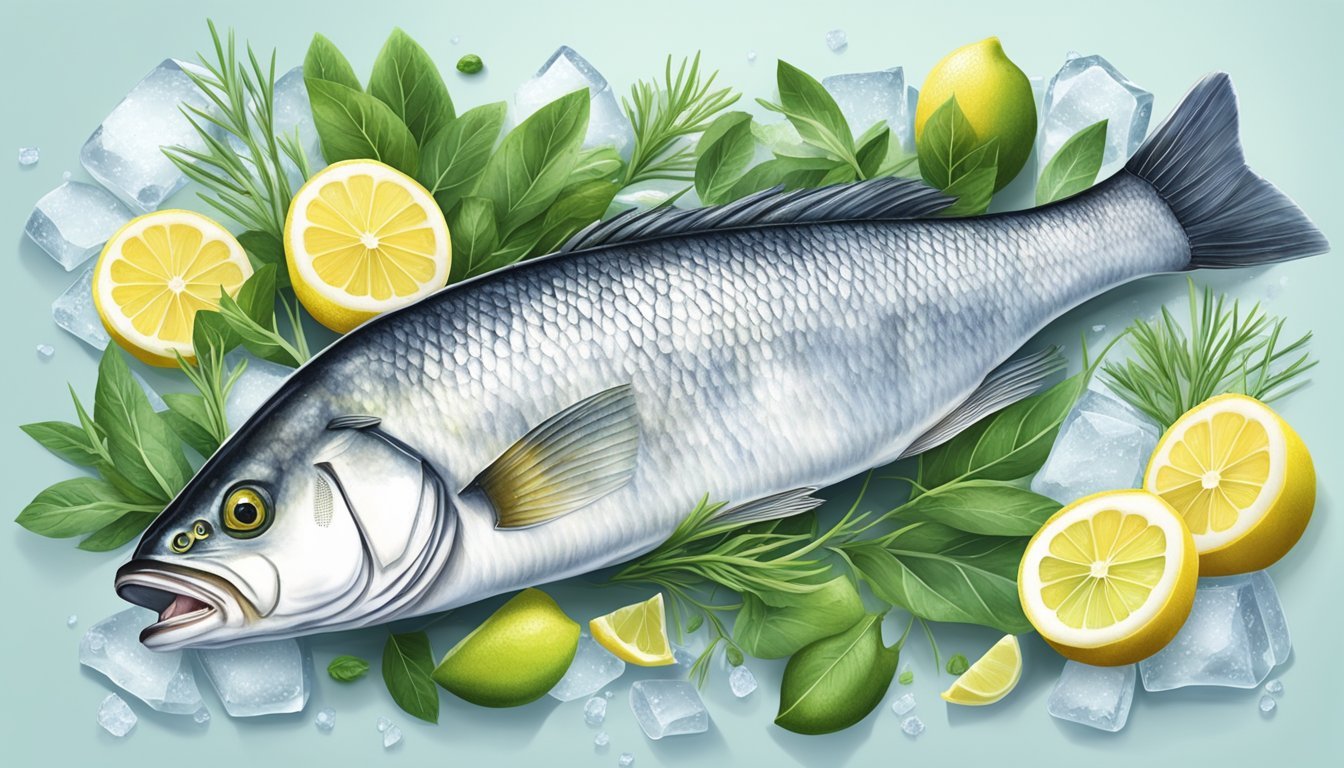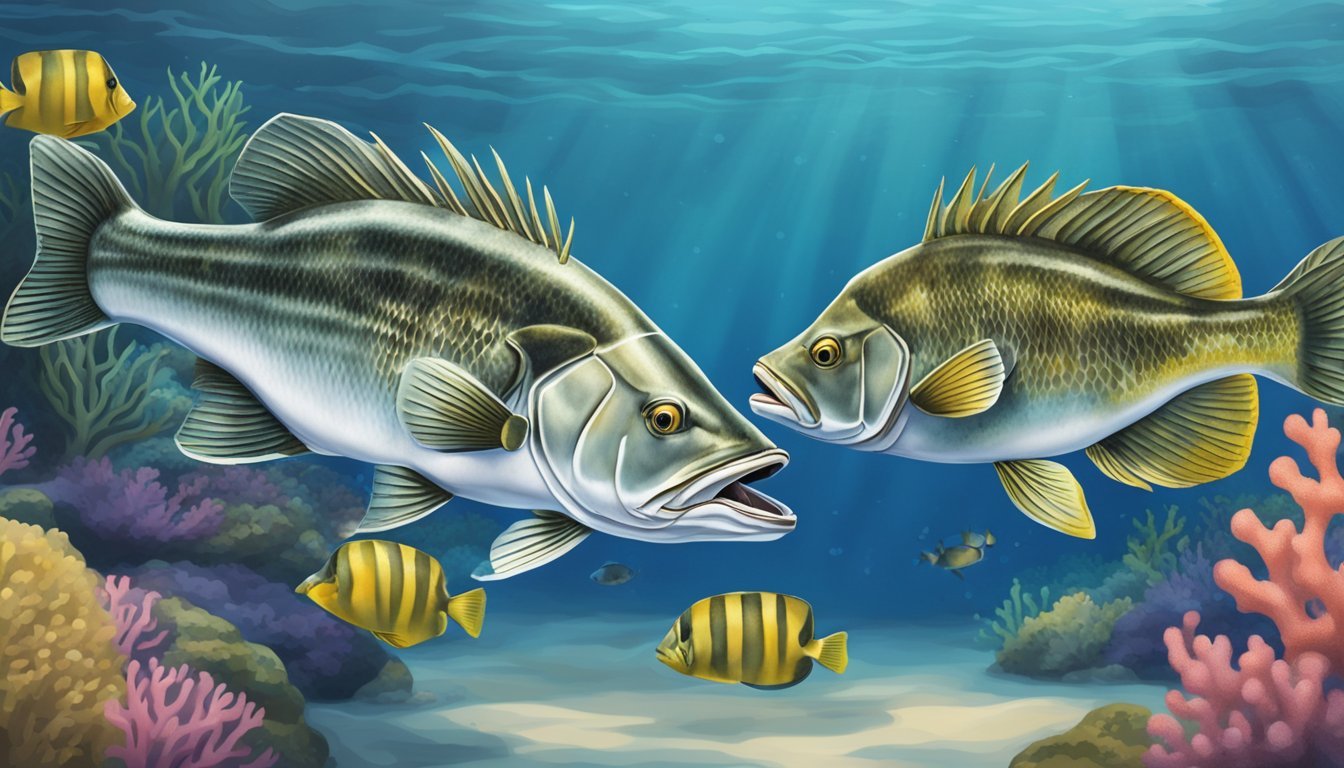Sea Bass Substitutes
Best Alternatives for Your Recipes
Finding a substitute for sea bass can be essential for various reasons. Whether it's due to availability, dietary restrictions, or cost concerns, knowing what other fish can serve as a good replacement ensures your recipe remains flavorful and satisfying. Branzino, a light fish with a flaky texture, is a perfect substitute for sea bass, thanks to its mild taste and sweet, tender meat.
Other excellent alternatives include cod and red snapper. Cod provides a dense texture with a slightly sweet flavor, making it a versatile choice for various dishes. Similarly, red snapper offers a mild, sweet flavor and firm, flaky texture, ideal for multiple cooking methods. Both options ensure your dishes retain the quality and taste you expect.
Understanding Sea Bass
Sea bass is a sought-after fish known for its mild flavor, versatility in cooking, and nutritional benefits. This section explores the characteristics, culinary uses, and global availability of sea bass.
Characteristics of Sea Bass
Sea bass typically has white, flaky flesh and a mild flavor. Its texture is smooth and delicate, allowing it to absorb various marinades and seasonings easily.
This fish is rich in protein, omega-3 fatty acids, vitamins, and minerals, making it a nutritious choice. Chilean sea bass, also known as Patagonian toothfish, is a variety known for its higher fat content and buttery texture.
Due to its popularity, some sea bass species are overfished, raising concerns about sustainability. Efforts are being made to promote responsible fishing practices to preserve stocks.
Culinary Uses
Sea bass can be cooked using various methods, such as grilling, baking, roasting, and pan-searing. Its mild flavor makes it ideal for Mediterranean, Asian, and American dishes.
Common preparations include grilled sea bass with herbs, baked sea bass with lemon, and sea bass tacos. Its versatility allows it to pair well with diverse ingredients, such as tomatoes, olives, and citrus.
Chilean sea bass is favored for its ability to retain moisture under high heat, making it perfect for rich, savory dishes. The delicate nature of the fish ensures it cooks quickly, saving time in the kitchen.
Global Availability
Sea bass is found in multiple regions worldwide, including the Mediterranean, Gulf of Mexico, and South American waters, particularly off Chile and Argentina.
Chilean sea bass and Patagonian toothfish are commonly caught in Southern Ocean waters and sold internationally. The demand for sea bass remains high in the U.S., Europe, and Asia.
Due to overfishing, some sea bass species are more regulated or farm-raised to meet global demand sustainably. Consumers can choose certified sustainable sources to help protect fish populations and promote eco-friendly practices.
Sea Bass Substitutes
Choosing a substitute for sea bass involves considering factors like texture, flavor, nutrition, sustainability, and price. Various options such as cod, branzino, and halibut can provide similar culinary experiences, making them viable alternatives.
Factors in Selecting Substitutes
Several factors come into play when selecting a sea bass substitute. Texture is key, as sea bass is known for its firm and flaky flesh. Flavor also matters, with sea bass offering a mildly sweet taste. Any substitute should mimic these properties.
Nutritional content is another aspect. Healthy options that provide protein and omega-3 fatty acids are preferred. Sustainability of the fishery is crucial to avoid overfishing and environmental impact. Finally, price can influence the choice, with more affordable options being attractive for budget-conscious consumers.
Substitute Options
Several fish make excellent substitutes for sea bass. Cod is a popular choice due to its mild flavor and dense texture, similar to sea bass. Branzino offers a light, flaky texture and sweet taste, making it ideal in Italian dishes.
Halibut provides firm, white flesh that pairs well with various sauces and preparations. Salmon can work in certain recipes, especially where a richer flavor is desirable, though it is more robust than sea bass. Haddock, with its similar fillet texture, and striped bass, a close relative, are also good options.
Other alternatives include tilapia and grouper, which can replicate the firm texture and mild flavor of sea bass. Each of these substitutes ensures a gratifying culinary experience.
Substitute Profiles
Choosing the right substitute for sea bass depends on matching the flavor, texture, and cooking method. Key options include firm-textured fish, mild-flavored varieties, and unique flavor alternatives.
Firm-Textured Fish
Halibut stands out as a great substitution due to its firm texture and mild flavor. It works well grilled or baked, holding up to bold seasonings.
Sea bream is another excellent choice, similar in firmness to branzino, making it ideal for pan-frying or broiling.
Monkfish offers a firm and almost meat-like texture. This fish is best suited for hearty dishes and can be used in various cooking techniques.
Firm-textured fish are versatile and can replace sea bass in many recipes, offering a robust bite and adaptable taste.
Mild-Flavored Varieties
Cod is a classic alternative with a flaky texture and mild taste, perfect for steaming or baking. Its delicate flavor allows it to absorb spices and herbs well.
Flounder has a subtle sweetness and fine flake, suitable for sautéing or poaching.
Barramundi presents a mild, buttery taste and moist texture, making it versatile for grilling and frying.
These options maintain the mild profile found in sea bass, ensuring the dish's flavor balance is intact.
Unique Flavor Alternatives
For a distinct twist, consider salmon, known for its strong, rich taste and oily texture. It's ideal for smoking or grilling.
Grouper offers a subtly sweet, firm texture, making it suitable for various cooking methods, from grilling to broiling.
Mahi mahi brings unique, slightly sweet flavors and a firm texture to the table, ideal for tropical-inspired dishes.
These unique alternatives allow experimenting with different flavors while still providing a satisfying replacement for sea bass.
Preparation Techniques For Substitutes
Selecting the right preparation techniques for sea bass substitutes can enhance their natural flavors and maintain their textures. These methods ensure your dish's success, whether you're baking, grilling, frying, steaming, or poaching.
Baking and Roasting
Baking and roasting work well for firm-fleshed substitutes like haddock and grouper.
Preheat the oven: Set it to 350°F (175°C) for a balanced and even cook.
Seasoning: Use lemon, salt, pepper, and herbs like parsley or dill to complement the fish.
Cooking time: Bake for 20-25 minutes, ensuring the fish is flaky and tender.
Roasting: Lightly brush with butter or oil and place it on a baking sheet; roast until the fish achieves a golden-brown exterior.
Grilling and Frying
Grilling and frying are excellent for substitutes such as striped bass, grouper, or branzino, which hold up well to direct heat.
Grilling: Preheat the grill and brush the fish with a blend of oil, lemon juice, and seasonings. Grill for 4-5 minutes per side for a delicate, yet firm texture.
Pan-frying: Use a hot pan with a bit of oil or butter. Cook until a golden, crispy outer layer forms, typically taking about 3-4 minutes per side. Ensure the interior remains juicy and tender.
Broiling: Place the fish close to the heat source for 4-5 minutes to achieve a lightly charred and crisp skin.
Steaming and Poaching
Steaming and poaching keep the fish's delicate flavors intact, perfect for substitutes like tilapia and barramundi.
Steaming: Use a steaming basket over boiling water. Season the fish with minimal salt and herbs. Steam for about 10-12 minutes until it's cooked through and flaky.
Poaching: Simmer in a broth made of water, lemon slices, herbs, and a pinch of salt. Maintain a gentle simmer, not a boil, for around 10 minutes to keep the fish tender and moist.
Each of these cooking methods allows for a variety of seasonings and accompaniments, ensuring that the substitute fish remains tasty and true to the intended dish.
Nutritional Comparison
When exploring sea bass substitutes, understanding the nutritional aspects is crucial. This evaluation covers protein, omega-3 content, and considerations for dietary restrictions, helping you choose the healthiest options.
Protein and Omega-3 Content
Sea bass is renowned for its high-quality protein and rich omega-3 fatty acids. Alternatives like haddock, cod, and branzino offer similar benefits.
Protein Content:
Sea Bass: 20g/100g
Haddock: 19g/100g
Cod: 17g/100g
Branzino: 18g/100g
Omega-3 Fatty Acids:
Sea Bass: 0.8g/100g
Haddock: 0.2g/100g
Cod: 0.2g/100g
Branzino: 0.7g/100g
The substitutes listed above provide substantial protein quality, though sea bass tops the list with omega-3 content comparable to branzino. These nutrients are key for heart health, brain function, and reducing inflammation.
Considerations for Dietary Restrictions
For those with dietary restrictions, mercury levels and nutrient content are significant factors.
Mercury Levels:
Sea Bass: High
Haddock: Low
Cod: Low
Branzino: Moderate
Nutrient Profiles:
Sea Bass: Rich in vitamins A, B-complex, D, E
Haddock: Excellent source of B vitamins
Cod: High in vitamins B6 and B12
Branzino: Abundant in essential fatty acids and vitamins
Sensitive Groups:
Pregnant women and young children should prefer low-mercury options like haddock and cod to avoid neurodevelopmental risks.
For those managing dietary restrictions, haddock and cod present safer profiles with low mercury levels and robust nutrient offerings, making them suitable replacements.
Environmental Impact
Choosing sustainable sea bass substitutes is essential for minimizing harm to fish populations and promoting eco-friendly fishing practices.
Sustainability of Sea Bass
Sustainability is a significant concern with sea bass. Wild sea bass is often overfished, leading to declining fish populations. Overfishing disrupts marine ecosystems and reduces biodiversity.
Many sea bass species are caught using methods that harm other marine life. Therefore, consumers should be cautious and look for certified sustainable sources of sea bass, or opt for farm-raised options that adhere to responsible practices.
Eco-Friendly Alternatives
Several fish are suitable alternatives to sea bass that have a lower environmental impact. Branzino (European Sea Bass) has a similar taste and texture and can be sustainably farmed. Tilapia is another eco-friendly option, often farmed with minimal environmental disturbance.
Striped bass and Alaskan sablefish (black cod) are also excellent substitutes. These species are usually harvested using methods that are less harmful to their surrounding ecosystem, ensuring sustainable fish populations.
Market Considerations
When looking at sea bass substitutes, price and accessibility play significant roles. Additionally, understanding demand trends can help consumers make informed choices.
Price and Accessibility
The market offers various substitutes for sea bass, such as cod, haddock, and seabream. Prices for these alternatives can vary considerably. For instance, cod and haddock are often more affordable compared to Chilean sea bass, which is known for its higher price point.
In the US and UK, consumers may find sea bass substitutes at local grocery stores or fish markets. Availability depends on the season and regional supply chains. For instance, Branzino is more commonly found in the US due to its popularity in Italian cuisine.
Table: Average Price Comparison
Fish Type Approx. Price per Pound Cod $10 - $15 Haddock $12 - $18 Branzino $15 - $20 Chilean Sea Bass $25 - $35
Demand Trends
Demand for sea bass substitutes is influenced by several factors, including sustainability concerns and dietary trends. Chilean sea bass has faced scrutiny due to overfishing, leading consumers to seek more sustainable options.
Substitutes like pollock, seabream, and tilapia have seen increased demand due to their sustainability and comparable flavor profiles. Furthermore, health trends promoting white-fleshed fish have bolstered their popularity.
In the UK, demand for cod and haddock remains high, driven by the traditional fish and chips market. In the US, there's growing interest in Mediterranean and Asian cuisines, increasing the popularity of alternatives like Branzino and halibut.









